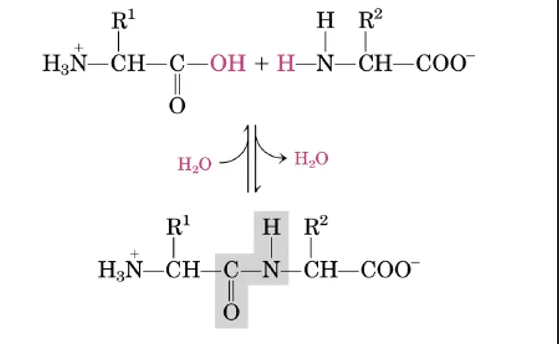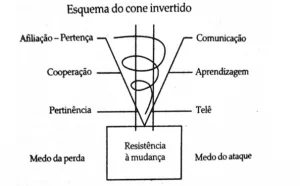ORIGINAL ARTICLE
MELARÉ, Rosália Costa Cavallante [1]
MELARÉ, Rosália Costa Cavallante. Influence of External Stimuli on Peptide Synthesis and Cellular Memory. Revista Científica Multidisciplinar Núcleo do Conhecimento. Year 08, Ed. 04, Vol. 05, pp. 96-101. April 2023. ISSN: 2448-0959, Access link: https://www.nucleodoconhecimento.com.br/psychology/influence-of-external-stimuli, DOI: 10.32749/nucleodoconhecimento.com.br/psychology/influence-of-external-stimuli
ABSTRACT
The present work aims to elucidate the process of protein synthesis at the cellular level and the potential influences of the environment, especially in the possibility of creating cellular memory that would result in the manifestation of certain physical and behavioral patterns. Based on reflections on information advocated by the literature, this article’s guiding question is: is it possible for the influence of external stimuli to affect peptide synthesis in a way that interferes with cellular memory? The long-lasting vibrational potential caused by external factors sensed by the sensory organs leads to stress of such intensity that it would activate this system, generating proteins not physiologically recognized. Thus, it is believed that the formed messenger RNA may remain in the medium for a long period, giving rise to a protein synthesis chronically, which can also be transmitted to descendants.
Keywords: Protein Synthesis, Cellular Memory, External Stimuli.
INTRODUCTION
The central nervous system interconnects the peripheral nervous system and encompasses all the neurons and nerve ganglia constituting all the innervation connected to organs such as the spinal cord and brain. This tissue receives information from sensory organs, processes this information, and formulates responses that lead to physiological actions through muscle contractions or gland activation, providing sensations such as pain, pleasure, and even cognitive information (MONTANARI, 2016).
Memory, on the other hand, is the ability to store information for later use. As this information can be converted into peptides, they can be transmitted from parents to children, meaning a child may inherit proteins that lead to a pathology such as anxiety or depression or even have memories of situations experienced by their parents (FOSAR; BLUDORF, 2001).
The mechanism used for memory storage is not well understood; thus, the potential for long-term potentiation is the main form studied for this purpose (GUYTON; HALL, 2011).
The term ‘stress’ was introduced in 1936 by the Canadian Hans Selye, describing it as a phenomenon that designates a systemic reaction of the organism to the demands of the environment in which it lives, captured by the sensory organs (MARGIS et al., 2003). Since then, many studies have focused on understanding how the chemical reactions produced by this phenomenon end up being incorporated by the individual.
However, very few studies point to the relationship with DNA, in the way the organism perceives and interprets this information, in a way to manipulate and even promote stages of consciousness capable of connecting us within a network.
Russian scientists Grazyna Fosar and Franz Bludorf dedicated themselves to investigating these phenomena, providing the basis for many other studies. Thus, drawing on the studies of Fosar and Bludorf, especially from the work ‘Vernetzte Intelligenz’ published in 2001 and ‘Intuitive Logik’ published in 2010, we seek to understand how DNA connections, especially through peptide synthesis, can explain events that were previously only discussed in the ideological or religious field (FOSAR; BLUDORF, 2010).
PEPTIDE SYNTHESIS
Peptides can be conceptualized as biomolecules consisting of two or more amino acids linked by peptide (amide) bonds. Currently, the literature identifies 20 different amino acids that, in various combinations, can constitute peptides. Peptides, in turn, display diverse biological activities such as antimicrobial, antithrombotic, opioid, antioxidant, cellular adhesion, differentiation and growth, immune response, control of cell membrane permeability, and intracellular and intercellular transport of genetic products, among others. Their activities are related to their respective formation structure (PIRES, 2012; LIMA, 2013).
Figure 1 illustrates an example of a peptide bond.
Figure 1. Peptide Bond

Regarding its size, Lima (2013) explains that it can vary between two to several dozens of amino acid residues.
Thus, it is considered that DNA holds the nitrogenous bases that are the recipe for protein synthesis. It is formed by genes, and when a gene is activated, an enzyme called RNA polymerase moves the DNA bases to bind with the free bases. This process is called transcription. At this point, messenger RNA is formed (BARREIROS; BARREIROS, 2015).
Therefore, messenger RNA can be processed, and parts of it can be cut and added, thus forming the recipe for a new protein. Messenger RNA moves towards the cytoplasm where ribosomes initiate the new protein to be manufactured, and the synthesis process begins (BORGES-OSÓRIO; ROBINSON, 2001). Thus, information is transmitted.
However, most studies tend to focus only on biological information, disregarding behavioral or psychological information. These aspects were refuted by researchers Flosar and Bludorf (2001; 2010), as we will see in the following part of this investigation.
CELLULAR MEMORY VS PEPTIDE SYNTHESIS
As mentioned earlier, this study argues that cellular memory is capable of storing much more than just biological information. According to Gourdon (2008), various scientific areas, especially related to physics, begin to demonstrate the existence of individuals interconnected by a kind of cosmic frequency, accentuated through their DNA connections.
According to Gourdon (2008), these discoveries can explain phenomena that were previously only evident in the religious field, but without clear explanations. Moreover, these connections would logically explain intuitive processes.
According to Flozar and Burdorf (2001), the role of DNA in protein production is only 10% of its exercises, as the other 90% are associated with the performance and development of certain types of frequencies, capable of being captured, shared, or received. According to the researchers, evidence of such statements can be found in DNA’s subsets of systems, including peptides.
Peptides, then, would be the key elements in transmitting information through a frequency capable of transferring what we can call intuition, i.e., the ability to recognize certain information without apparently having a rational explanation. This phenomenon was, for many years, considered a product of the human mind’s subconscious, widely explored in the field of subjectivity and spirituality. However, now, researchers like Flozar and Burdorf (2001; 2010) and Gourdon (2008) bring a new perspective to intuitive logic as not only a physiological response but also capable of being transmitted and even interconnected with protein synthesis.
Although research in Brazil has been scarce, these studies bring new perspectives for further investigation and, within a logical process, point out paths to be explored.
FINAL CONSIDERATIONS
Understanding the phenomena of intuition or even the ability to recognize events through visions that surpass time and space has been a true mystery for many years. Several researchers attributed such phenomena to the field of paranormality, spirituality, or even subjective aspects of the subconscious.
However, the unfolding paths that are beginning to unfold and are preliminarily pointed out in this essay lead us to a path that may not only explain these phenomena in a logical and physiological way but also propose a line of investigation so that all human beings can develop such abilities, being therefore a new possibility to maximize potentialities.
Thus, it is proposed that future Brazilian research can unfold in this field.
REFERENCES
BARREIROS, A. L. B. S; BARREIROS, M. L. Peptídeos e proteínas. Aula apresentada à Universidade Federal de Santa Catarina, 2015.
BORGES-OSÓRIO, Maria Regina; ROBINSON, Wanyce Miriam. Genética humana. 2ª Ed. Porto Alegre, Artmed, 2001. 459 p.
FOSAR, G.; BLUDORF, F. Vernetzte Intelligenz. Alemanha: Ed. Omega Verlag Silberschnur., 2001.
FOSAR, G.; BLUDORF, F. Intuitive Logik. Alemanha: Ed. Michaels Vertrieb, 2010.
GOURDON, C. C. Switching On The Cosmic Connection: are we ready to join an interplanetary community? World Affairs: The Journal of International, ano 12, n. 2, p. 64–83, 2008.
GUYTON, A. C.; HALL, J. E. Tratado de Fisiologia Médica. 12ª Ed. Rio de Janeiro: Elsevier, 2011.
LIMA, M. M. Síntese de Peptídeo Modificado contendo o grupo 1,2,3-triazol, 1,4-dissubstituído. Dissertação (Mestrado em ciência) – Universidade de São Paulo. Ribeirão Preto, 2013.
MARGIS, R. et al. Relação entre estressores, estresse e ansiedade. R. Psiquiatr., vol. 25 (suplemento 1), p. 65-74, 2003.
MONTANARI, T. Histologia: texto, atlas e roteiro de aulas práticas. 3ª Ed. Porto Alegre: Ed. da autora, 2016. 229 p.
PIRES, D. A. T. Síntese, Purificação e Determinação Estrutural de Peptídeos como Ferramenta Exploratória de Atividades Biologicamente Relevantes. Dissertação (Mestrado em química) – Universidade de Brasília/Instituto de Química. Brasília, 2012.
[1] Pharmaceutical Biochemist, specializing in Clinical Analyses. ORCID: 0009-0005-8241-8674.
Sent: February 23, 2023.
Approved: April 3, 2023.



